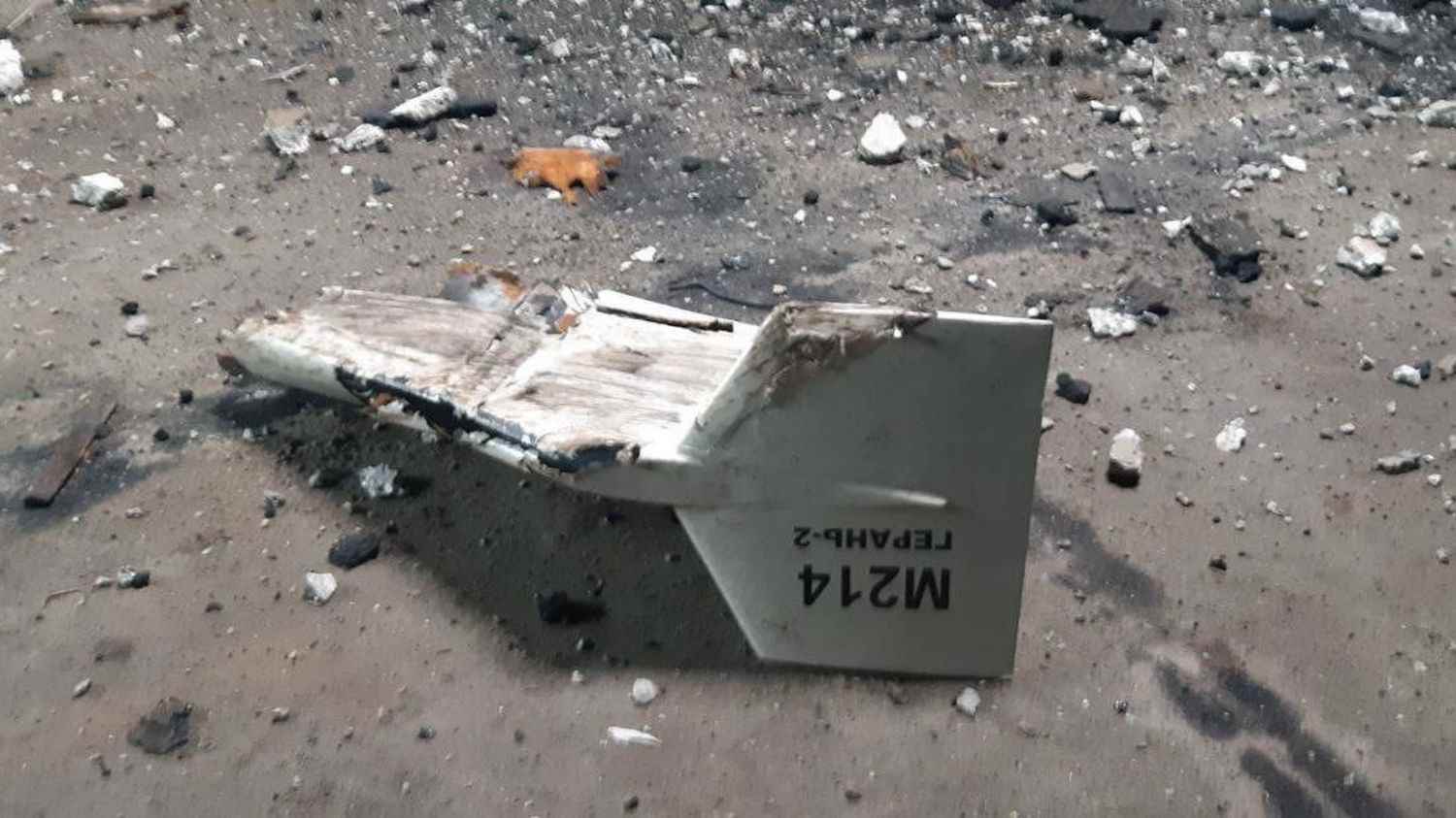Some buildings in Bila Tservka were still on fire in the early hours of Wednesday, October 5. This small town 80 kilometers south of kyiv bears the scars of a Russian strike, which left at least one injured. This attack, which targeted the 72nd mechanized brigade, according to the Ukrainian authorities, was carried out using Iranian-made drones, Shahed-136. The same night, kyiv says it neutralized six other suicide bombers of the same model, in the Mykholaïv region.
>> War in Ukraine: Ukrainian forces claim advances in the Luhansk region. Follow our live
This one had already been targeted, three days earlier, by these drones and several similar attacks have recently been reported in the Kryvyi Rih region and around Odessa, a city so far relatively spared, because out of reach of the Russian artillery. For three weeks, Shahed-136 drones have been deployed on a large scale by the Russian army and the documents attesting to the use of these long-range weapons are multiplying. Franceinfo takes stock of this new threat against Ukraine.
The first concerns arose on September 13, when the Ukrainian army released images of a long-range drone, presented as a Shahed-136 due to “the appearance of the wings”. A month earlier, a first test had been carried out by Russia against an American howitzer, according to Rodio Kulagin, a Ukrainian officer interviewed by the wall street journal (in English).
These macabre flowers have been renamed “Geran-2” (“Geranium”), but it is, in fact, Shahed-136 (“Martyr-136”, in Farsi). These devices measure 3.5 meters wingspan for 200 kg and can be equipped with a warhead of 40 kg. “These drones reach [leur] target by GPS coordinates, forward inputs [leur] lift-off”, explained to AFP Pierre Grasser, French researcher associated with the Sirice laboratory in Paris. Their “main flaw is that they can only hit stationary targets”. This type of drone is used when the Russian artillery is struggling.
“They make a lot of noise, like a chainsaw or a scooter” and their effectiveness is “very low”, assured Natalia Goumeniouk, spokesperson for the Ukrainian military command, interviewed by AFP at the end of September. Their effect, essentially, is to exert a “psychological pressure on the population”. It recognized, on the other hand, that these devices “are very difficult to detect because they fly very low”. These drones are launched in “clusters”, Ukrainian air force spokesman Yuriy Ignat said on Wednesday. The radar signals they cause can then be interpreted as a single target.
“In fact, it’s like an artillery shell, it flies at 120 kilometers per hour and descends at a higher speed when it hits the target.”
Yuriy Ignat, spokesman for the Ukrainian Air Forceon Ukrainian television
“With the help of another drone that observes and targets, the Shahed-136s operate as guided missiles.”recently explained to the Figaro Igor Delanoë, deputy director of the Franco-Russian observatory in Moscow. For this, it can be supported by another reconnaissance and targeting drone, such as the Mohajer-6, also of Iranian manufacture.
This medium-altitude, long-endurance aircraft is considered the direct competitor of the Turkish Bayraktar TB-2 of the Ukrainian Armed Forces. In August, American intelligence, cited in particular by Politico (in English), had also observed Russian aircraft movements at an Iranian airfield. In game: Mohajer-6, Shahed-129 and Shahed-191 drones, dedicated to reconnaissance, target identification and targeted strikes.
How many of these Shahed-136 drones does the Russian army have? Maybe hundreds, according to Yuriy Ignat. The Ukrainian forces must therefore find an emergency response. Ten days ago, this issue was the subject of a meeting between President Volodymyr Zelensky and several officials, according to Reuters (in English).
Not all units have anti-drone guns, wave jammers and other air defense systems. Some have to improvise homemade systems, with machine guns equipped on vehicles. And with weak guarantees of effectiveness. “Here is the first result of the ‘moped hunters'”, Vitaliy Kim, governor of the Mykolaiv oblast, welcomed Wednesday with a photo of two supposed Iranian drones. He did not specify, however, how these drones were shot down.

kyiv also wants to react on the diplomatic field, by calling Tehran to account. The Ministry of Foreign Affairs denounced deliveries, “in contradiction to the position of neutrality publicly displayed by senior Iranian officials”. The ambassador’s accreditation was removed at the end of September, despite Iran’s denials, and the Iranian diplomatic presence was reduced in Ukraine.
